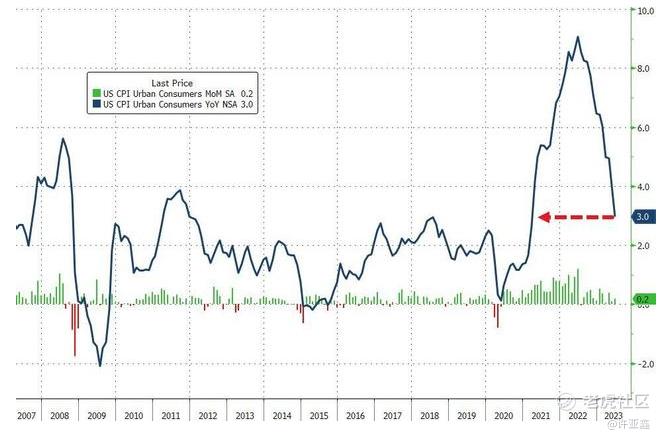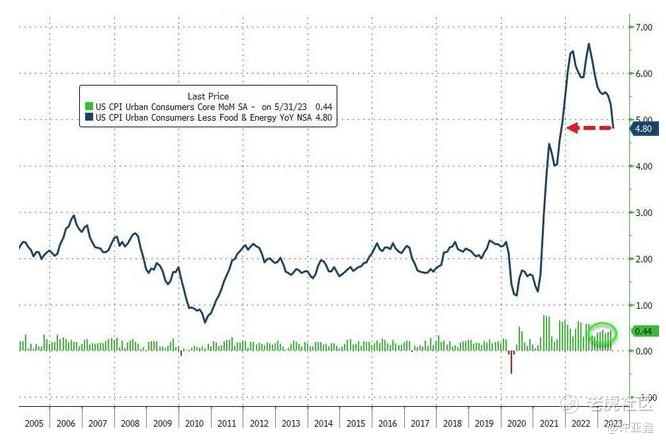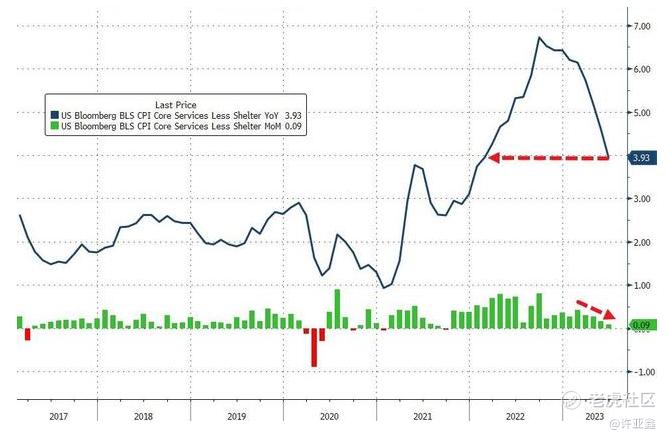At 20:30 Beijing time, the data released by the US Bureau of Labor Statistics showed that the year-on-year increase of CPI in June in the United States continued to fall from 4% in May to 3%, which was lower than expected by 3.1%.
It declined for the 12th consecutive month and was the lowest since March 2021;CPI rose by 0.2% month-on-month, higher than the previous value of 0.1%, but lower than the expected 0.3%.

Simultaneously, the core CPI-excluding food and energy-which economists believe is a better measure of potential inflation-rose 4.8% year-on-year, which was lower than the expected 5% and the previous value of 5.3%.
It is the lowest since October 2021, but it is still far higher than the target of the Federal Reserve; The core CPI rose by 0.2% month-on-month, which was also lower than the expected 0.3% and the previous value of 0.4%, and the lowest since August 2021.

In addition,The CPI of core services excluding housing, which the Federal Reserve pays attention to, fell to 3.93% year-on-year.The lowest since January 2022.

I believes that the CPI data in June is lower than expected and previous values both year-on-year and month-on-month, and the core CPI data is lower than expected and previous values both year-on-year and month-on-month.
Although such data superimposed on Friday's non-agricultural data will not change the Fed's determination to require rate hike by 25 basis points in July, It is very likely that the interest rate meeting in July will be the real end of this round of Fed rate hike.
Considering the high base in July, August and September 2022, it is expected that the year-on-year inflation data in the United States will continue to decline further, and then keep approaching the target of 2% required by the Federal Reserve. Once the labor market data released in early August further slows down, it is reasonable to speculate that there will be a high probability that the Federal Reserve will stay put in September.
Based on the above logic, we can see that after the inflation data was released, the the US Dollar Index accelerated diving, commodities represented by gold, silver and oil rose, US stocks also rose after the opening, and US bond yields plunged.
Then, standing at this time node, it is necessary for me to remind everyone that the previous rebound trend of commodities has to transition from rebound to reversal from a technical point of view and in combination with fundamentals.
Rebound is not necessarily the bottom, but reversal confirms that it is really the bottom.
-END-
NQ100 Index Main Connection 2206 (NQmain) $$Gold Main 2206 (GCmain) $$Dow Jones Main Link 2203 (YMmain) $$2205 (NGmain) $$WTI Crude Oil Main Line 2206 (CLmain) $
Comments
The advice for novices is to be short on U.S. stocks and not short. You can adjust the proportion of positions appropriately. If you don’t have several years of experience in underlying stock trading, don’t touch options.
After the release of the data, the U.S. dollar index fell sharply. Does the expected decline in CPI mean that a new currency cycle is about to start?
The released CPI data shows that the core problem of the current economic recovery is still insufficient demand
In the era of deflation, don't buy a house, buy gold
S&P 500 Continues to Make New Highs